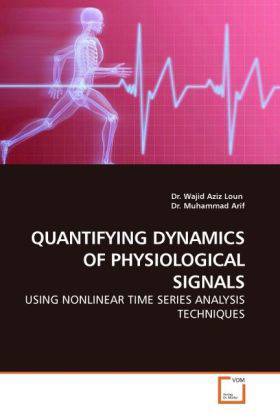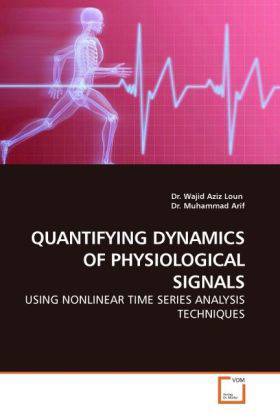
- Afhalen na 1 uur in een winkel met voorraad
- Gratis thuislevering in België vanaf € 30
- Ruim aanbod met 7 miljoen producten
- Afhalen na 1 uur in een winkel met voorraad
- Gratis thuislevering in België vanaf € 30
- Ruim aanbod met 7 miljoen producten
Zoeken
QUANTIFYING DYNAMICS OF PHYSIOLOGICAL SIGNALS
USING NONLINEAR TIME SERIES ANALYSIS TECHNIQUES
Wajid Aziz Loun, Muhammad Arif
Paperback | Engels
€ 58,45
+ 116 punten
Omschrijving
Physiological systems serve as a fascinating playground for the analysis techniques, which stem from the discipline of nonlinear dynamics. The essential non-linearities and the complexity of physiological interactions limit to the ability of linear analysis to provide full description of the underlying dynamics. This makes nonlinear analysis an invaluable tool for the analysis of physiological signals. Robust time series analysis measures are needed to quantify the dynamics of physiological signals.Despite of the fundamental difference in their regulation, the research in heart rate variability analysis has spurred the similar investigations in gait variability analysis.This study is methodological approach for quantifying the dynamics of heart rate and stride interval signals in health and disease. Two nonlinear measures: Threshold based acceleration change index (TACI) and normalized corrected Shannon entropy (NCSE) at different threshold values have been used to quantify the dynamics of heart and stride interval time series of healthy and diseased subjects.
Specificaties
Betrokkenen
- Auteur(s):
- Uitgeverij:
Inhoud
- Aantal bladzijden:
- 152
- Taal:
- Engels
Eigenschappen
- Productcode (EAN):
- 9783639235449
- Verschijningsdatum:
- 4/03/2010
- Uitvoering:
- Paperback
- Afmetingen:
- 152 mm x 229 mm
- Gewicht:
- 231 g

Alleen bij Standaard Boekhandel
+ 116 punten op je klantenkaart van Standaard Boekhandel
Beoordelingen
We publiceren alleen reviews die voldoen aan de voorwaarden voor reviews. Bekijk onze voorwaarden voor reviews.











